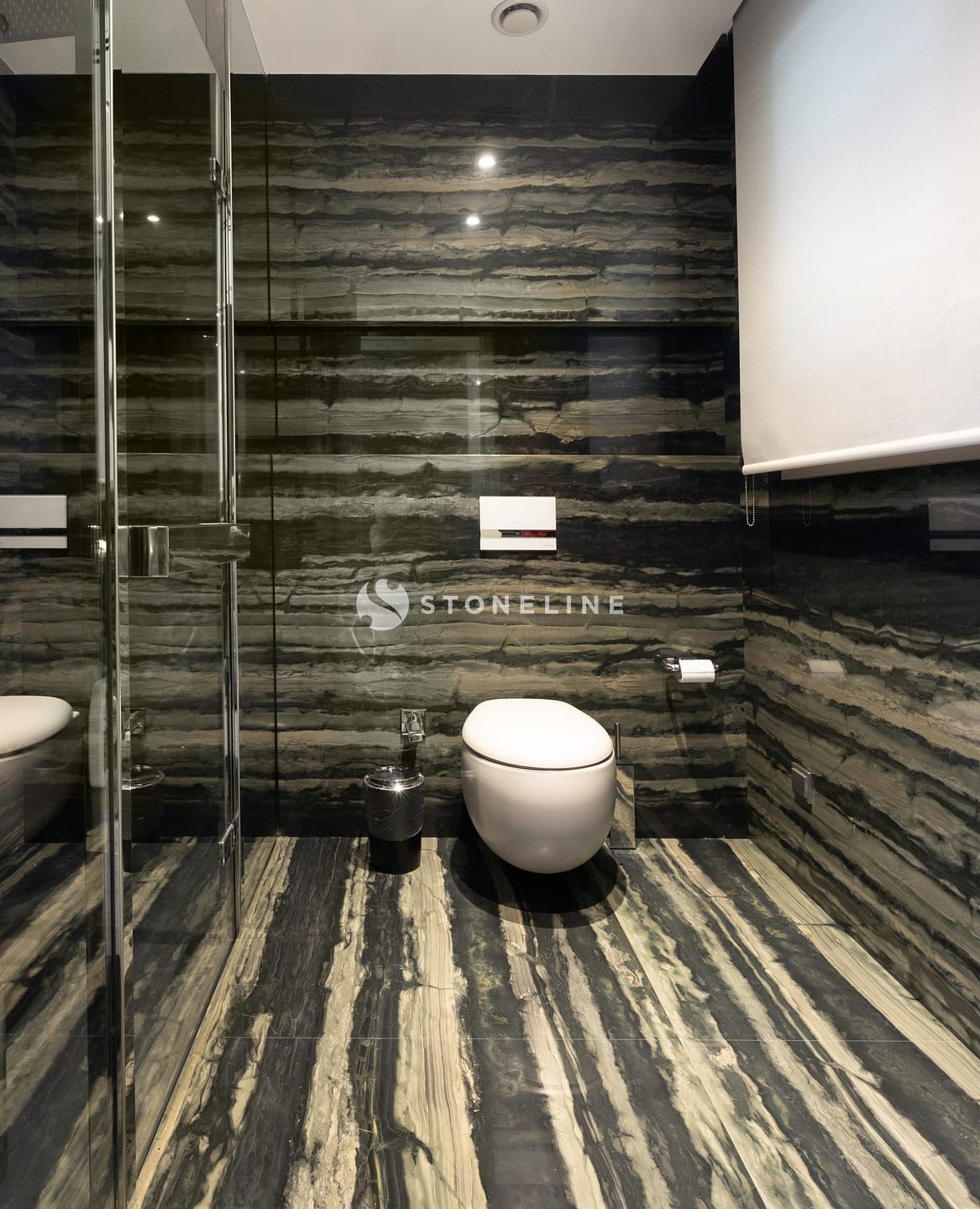“So why use an artificial surface?”So why use an artificial surface?
Artificial surfaces become replicated, become commonplace, and lose their essence.
But Quartzite, with its stain-resistant and scratch-resistant properties, is a timeless originality derived from the heart of nature.”
Quartzite is a metamorphic rock predominantly composed of quartz crystals, originating from the transformation of quartz-rich sandstones under intense heat and pressure.
Sandstones that are merely cemented by quartz without full metamorphism are classified as quartz-cemented sandstones, whereas those that have undergone complete metamorphic recrystallization are termed metaquartzites or orthoquartzites.
What is Quartzite? What is Quartz?
Despite their similar names, quartzite and quartz differ in both their formation process and their uses.
While quartz is a mineral commonly found in igneous and metamorphic rocks and used in the production of commercial porcelain countertops, quartzite is a natural stone formed by the metamorphosis of quartz under high temperature and pressure.
Quartzite is distinguished by its hardness and support, while quartz is used as an additive in industry, particularly in engineered stone.
Key Characteristics and Advantages
Quartzite is distinguished by its broad color range, extending from white to gray, pink, green, and blue.
It exhibits exceptional durability, hardness, and resistance to staining. Moreover, the stone is highly resilient against heat and scratches, making it an ideal material for both functional and aesthetic applications.
Common Applications:
- Kitchen and bathroom countertops
- Flooring
- Wall cladding
- Exterior architectural applications
- Decorative furnishings such as tables and coffee tables
How to Select the Right Quartzite
When choosing the appropriate stone for a project, key factors to consider include the variety, surface texture, color, veining patterns, and overall quality.


Key Considerations for Design
Lighting, Texture, and Color Harmony
When designing with quartzite, it is essential to ensure harmony with other elements within the space.
- Color: It can either create contrast or achieve cohesion with other natural stones and furnishings, depending on the desired aesthetic.
- Texture: Available in both honed (matte) and polished finishes, the stone can enhance and complement the overall character of an environment.
Popular Design Applications for Quartzite:
- Kitchen Countertops: A popular choice due to its exceptional durability and aesthetic appeal.
- Flooring and Wall Cladding: Thanks to its strength and stain resistance, it is ideal for both indoor and outdoor flooring and wall cladding, especially in high-traffic areas.
- Decorative Furnishings: Frequently selected for creating elegant tables, coffee tables, and similar accent pieces.
Featured Quartzite Natural Stones






Our Quartzite Projects and Applications

7020 DESIGN STUDIO / PRIVATE RESIDENCE PROJECT / 1

PODNA ARCHITECTURE / PRIVATE RESIDENCE PROJECT / 1

PRIVATE RESIDENCE PROJECT – 14
Surface Maintenance and Protection
To maintain its beauty over time, clean the surface regularly with a soft cloth, using soap and warm water.
It is often compared to granite and marble in terms of durability and aesthetic appeal. However, it has unique characteristics and advantages that set it apart.
Yes, it can be used outdoors due to its durability and resistance to weathering. However, it’s essential to seal the surface regularly to protect it from the elements.
These surfaces are relatively low maintenance and can be cleaned with mild soap and water. However, it’s recommended to seal them periodically to protect against stains and spills.
Quartzite is commonly used for countertops, flooring, walls, and other architectural features due to its durability and aesthetic appeal.
It is formed when quartz-rich sandstone is exposed to high temperatures and pressures, causing the quartz grains to recrystallize into a solid rock.
It is known for its durability, hardness, and resistance to heat and scratches. It also comes in a wide range of colors and patterns, making it a popular choice for countertops, flooring, and walls.
Quartzite is a natural stone formed from sandstone, while quartz is a mineral that can be found in various types of rocks. Quartzite is often confused with quartz, but they have distinct differences in terms of composition and formation.
It is formed through a process called metamorphism, where quartz-rich sandstone is exposed to high temperatures and pressures, causing the quartz grains to recrystallize into a solid rock.
Quartzite’s mineral composition, which is primarily quartz, contributes to its durability and resistance to heat and scratches. The quartz grains are tightly packed, making it difficult for other minerals to penetrate and cause damage.
Its relatively low thermal conductivity allows it to withstand high temperatures without conducting heat, making it a popular choice for kitchen countertops and other high-heat uses.
Yes, it can be used for exterior cladding due to its durability and resistance to weathering. Benefits include a natural, rustic appearance and a low-maintenance surface that withstands harsh conditions.
There are several types of Quartzite, including White Macaubas, Taj Mahal, and Sea Pearl, each with its unique color and pattern. The variations in color and pattern are due to the presence of other minerals, such as iron oxide and titanium dioxide.
Quartzite is a hard, non-foliated metamorphic rock that was originally pure quartz sandstone. It is formed through heating and pressure, resulting in a compact, granular rock composed mainly of quartz.
 Stoneline
Stoneline